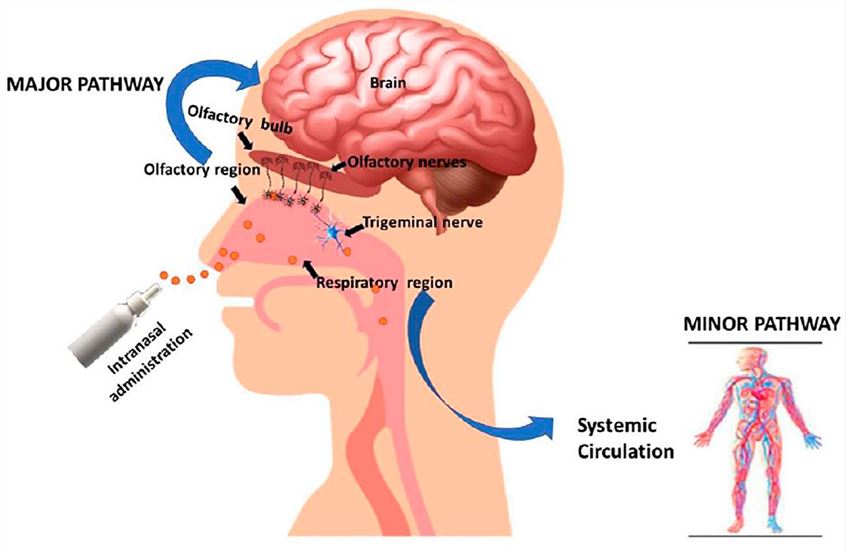Intranasal Administration-Fashioned Exosomes Advantage and Application
Intranasal administration (IA) refers to a method of administration through the nasal cavity for local or systemic treatment. IA is especially suitable for drugs that have difficult routes of administration and need to enter the body, such as polar drugs that are difficult to absorb orally, drugs that are unstable in the gastrointestinal tract, and drugs with strong first-pass effects in the liver. With the development of exosome drugs, non-invasive IA is more and more favored by researchers around the world due to its rapid absorption, high bioavailability, and convenient administration. Creative Biolabs has been focusing on the development of exosome drugs and can provide global customers with the most comprehensive exosome extraction and identification services and the most reliable in vivo functional verification services of exosomes.
Advantages of Intranasal Administration
-
The nasal cavity has a large absorbent surface area. The respiratory zone is the largest part of the nasal cavity and the main site of nasal absorption of drugs. The nasal wall is covered with mucous membrane, and the submucosal blood vessels are rich and the blood flow is relatively large. The total area of the drug that can be absorbed quickly and effectively is about 160 cm2.
-
Drugs absorbed through the IA can go directly to the brain, thus avoiding the first-pass effect. Traditional oral administration and injection administration make the drug be cleared in the intestinal mucosa and liver in large quantities before entering the systemic circulation so that the amount of drug entering the systemic circulation is reduced. However, after the drug is absorbed by the nasal mucosa, it can directly enter the cerebrospinal fluid through the olfactory pathway and the trigeminal nerve pathway, so that the drug can quickly enter the brain.
-
IA is easy to operate, and suitable for self-rescue and first aid for patients.
-
Exosomes are nanoscale lipid vesicles that are readily absorbed by the nasal mucosa via IA.
 Fig.1 Mechanism of drug delivery via the intranasal route of administration.1,2
Fig.1 Mechanism of drug delivery via the intranasal route of administration.1,2
Application of IA-Fashioned Exosomes
Many existing studies have confirmed that the IA strategy of exosomes has been used as an effective way to deliver various therapeutic drugs to the brain for the treatment of neurological diseases. For example, exosomes loaded with phosphatase and tenascin-homologous small interfering RNA can significantly enhance axon growth and neovascularization after IA, thereby restoring motor coordination in rats with spinal cord injury. After IA, exosomes loaded with curcumin can promote the recovery of neuronal function and reduce neuroinflammation in Parkinson's disease mice by reducing α-synuclein aggregates. Therefore, IA-fashioned exosomes have very broad clinical application prospects in the treatment of neurological diseases.
Creative Biolabs can provide a variety of exosome engineering services to help you construct engineered exosomes loaded with therapeutic small molecules. In addition, we can also provide nervous system disease model construction service for researching function of exosomes to accelerate the clinical transformation of your IA-fashioned exosome drugs. Please contact us to put forward your ideas, and we will formulate the most rigorous experimental plan for you.
References
-
Pandey, M.; et al. Advances and challenges in intranasal delivery of antipsychotic agents targeting the central nervous system. Frontiers in Pharmacology. 2022, 13:865590.
-
under Open Access license CC BY 4.0, without modification.
For Research Use Only. Cannot be used by patients.
Related Services:

 Fig.1 Mechanism of drug delivery via the intranasal route of administration.1,2
Fig.1 Mechanism of drug delivery via the intranasal route of administration.1,2









